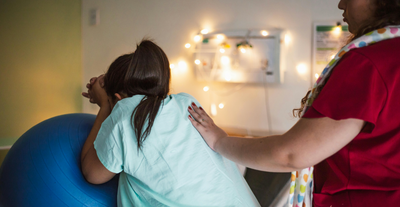How Can I Be Sure To Pump Enough Milk?
How Can I Be Sure To Pump Enough Milk?
By Dr. Stephanie Canale - founder of Lactation Lab
It has been said many times over, and most mothers who nurse agree, that there is no better breast pump than baby! From my experience, however, there appears to be more and more women who choose to pump milk from the outset. Some women either have difficulty with latching, have nipple issues or simply prefer to pump.
Here are a few tips I would like to share as a physician, mother, and “master pumper!”
- It is necessary to drink plenty of fluids throughout the day, and I would recommend hydrating on the way to work, having a water bottle close by at your desk, and keeping a few around the house to always have one handy.
- In order to keep up your milk supply, it is also important to eat and drink often and consume in excess of 500 calories more per day than usual.
- I recommend investing in an automated pump. There are both manual and automated pumps on the market. A manual pump can take quite a bit of time but is useful for blocked ducts and during times of breast engorgement.
- When using a manual pump I recommend massaging the breast with the free hand from the outer most areas to the nipple and continuing in a circular manner in order to massage the entire breast.
- Before trying a pump it is important to know that one size does not fit all! Manual pumps vary in speed, attachments, size and weight, and women have nipples of different sizes and shapes, so choosing a pump that allows for physical variability is important.
- It is a good idea to consult with a lactation specialist or postpartum nurse and ask about nipple attachments and fitting of cups. A good pump should allow you to empty the breast with ease. It should not be painful to pump.
- I do recommend consulting with a lactation specialist if you are having difficulty with pumping and for some renting a hospital grade pump may be the short-term answer. A hospital grade pump has more powerful suction.
- Consider spare parts so that you always have a dry set ready to go. Some women enjoy the hands-free pumping bra while others get the hang of holding both cups with one hand. Making sure that the cup is the right size to avoid nipple injury is also key. Fluctuating the pump between a continuous and alternating method will also help extract more milk.
For women that have a long commute to work I recommend the following as a template or sample schedule:
- On waking, nurse or pump at home.
- Pump in the car on the way to work (key for women who have a long commute, but please be safe in the car!)
- Pump 1-3 times at work if possible, and consider blocking time on your calendar as you would block out a work meeting so you can protect your time.
- Pump again on the way home.
- Nurse or pump before bedtime.
I also suggest investing in good storage bags and making sure they are sealed and lying flat to maximize storage space in the freezer, and recommend freezing some bags of milk in 1 oz increments so that you can have small amounts of milk as needed to “top off” feeds. Make storing milk as easy as possible. Some women choose to invest in a small fridge-freezer for their office or simply buying a few insulated bags will work. I would always keep a spare insulated storage bag and spare bottles to pump in the car in case they are forgotten.
If your baby is a picky eater and is struggling with the taste of pumped milk, find tips here or download the Emily’s Care app for more breastfeeding support.
Note: A version of this post first appeared in New York Family.
About Dr. Canale: Stephanie is a tireless advocate of maternal and infant health. She is a practicing family physician at UCLA Santa Monica and the founder of Lactation Lab.






